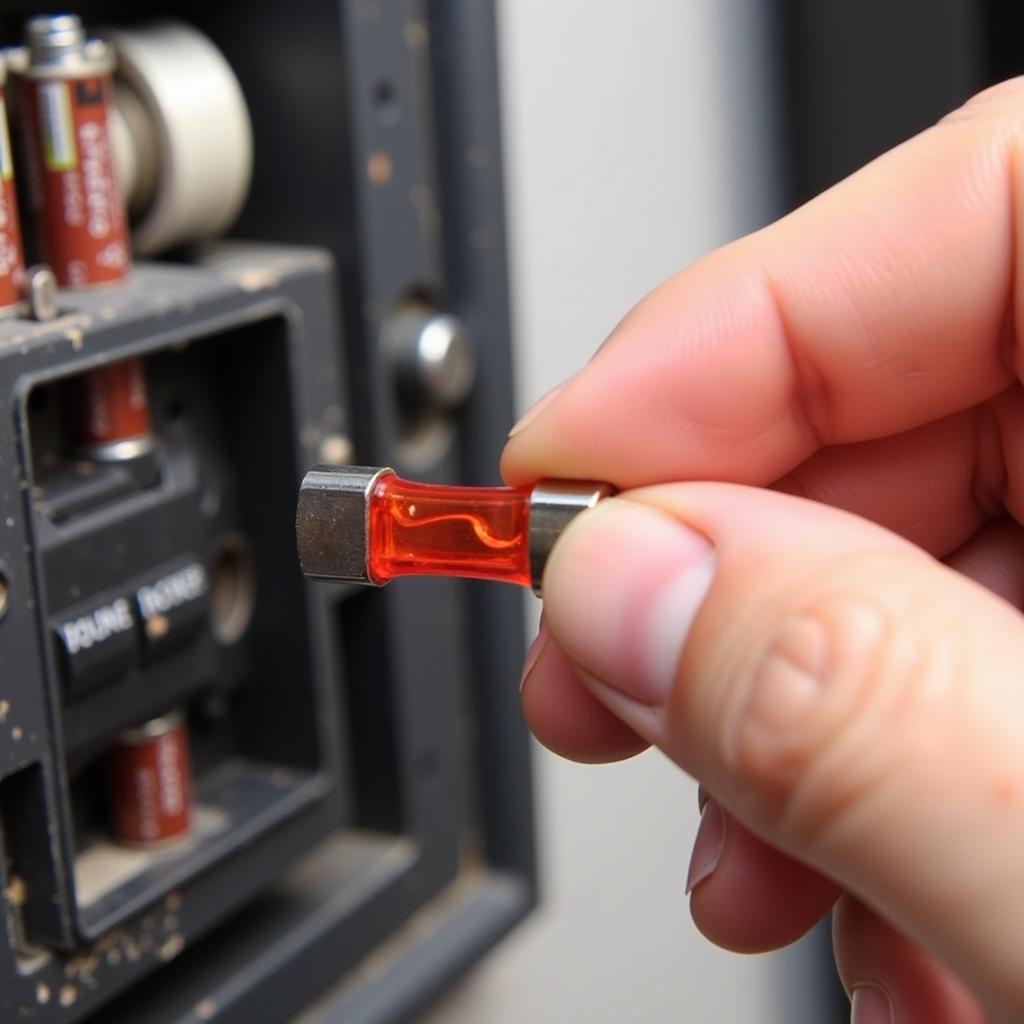A dead car battery is frustrating, especially when it keeps happening. If your car battery keeps getting drained, this comprehensive guide will help you diagnose the problem and find a lasting solution. We’ll cover common causes, troubleshooting tips, and even remote software solutions that can help get you back on the road.
Understanding Why Your Car Battery Keeps Dying
There are numerous reasons why a car battery keeps draining. Some are simple fixes, while others require a more in-depth diagnosis. Identifying the root cause is crucial for a permanent fix. Let’s explore some of the most common culprits.
Parasitic Drain: The Silent Killer
A parasitic drain occurs when an electrical component continues to draw power even after the car is turned off. This can be anything from a faulty interior light to a malfunctioning radio. Even a small drain can deplete your battery over time. something keeps draining my car battery This can be especially problematic if your car battery being drained overnight. car battery being drained overnight
Faulty Alternator: Not Charging Properly
The alternator is responsible for recharging the battery while the engine is running. If the alternator isn’t functioning correctly, it won’t replenish the battery’s charge, leading to a drained battery. Wondering, “Is my alternator draining my battery?” is my alternator draining my battery It’s a common concern, and we’ll discuss how to test your alternator later in this guide.
Extreme Temperatures: Affecting Battery Performance
Extreme temperatures, both hot and cold, can significantly impact battery performance. Cold weather can slow down the chemical reactions within the battery, reducing its capacity. Excessive heat can accelerate battery degradation.
Old Age: Batteries Don’t Last Forever
Like any other component, car batteries have a limited lifespan. Over time, their ability to hold a charge diminishes, leading to more frequent draining.
 Testing a car battery with a multimeter
Testing a car battery with a multimeter
Diagnosing the Drain: Troubleshooting Tips
Now that we understand the potential causes, let’s delve into how to diagnose the problem.
Using a Multimeter to Check for Parasitic Drain
A multimeter can be used to measure the current draw when the car is off. This can help pinpoint any electrical components drawing excessive power.
Testing the Alternator Output
Testing the alternator’s output voltage can determine if it’s charging the battery correctly. A low voltage reading indicates a potential alternator problem.
Inspecting the Battery for Physical Damage
Check the battery for any signs of physical damage, such as cracks or leaks. A damaged battery needs to be replaced.
Checking Battery Connections
Loose or corroded battery terminals can prevent the alternator from properly charging the battery. Ensure the connections are clean and tight.
Remote Software Solutions: Modern Diagnostics
Modern vehicles are equipped with sophisticated software that can be accessed remotely for diagnostics. These tools can pinpoint issues related to the electrical system, including battery drain problems.
“Remote diagnostics have revolutionized how we approach car repair,” says John Miller, a certified automotive technician with over 20 years of experience. “They allow us to quickly identify and resolve issues, often without the need for a physical visit to the shop.”
Fixing the Problem: Solutions for a Drained Battery
Once you’ve identified the cause, here are some solutions for a drained battery:
- Replacing a Faulty Alternator: If the alternator is the culprit, it will need to be replaced.
- Addressing Parasitic Drains: Identifying and fixing the component causing the parasitic drain will resolve the issue.
- Replacing an Old Battery: If your battery is old, it’s time for a new one.
- Improving Battery Connections: Cleaning and tightening battery terminals can improve charging.
Preventing Future Drains: Proactive Measures
“Regular maintenance is key to preventing battery drain issues,” advises Sarah Lee, an electrical systems expert with 15 years in the automotive industry. “Simple checks can save you from headaches down the road.”
Here are some preventative measures:
- Regularly check your battery terminals for corrosion.
- Ensure all electrical components are turned off when the car is not in use.
- Have your battery and alternator tested periodically, especially in extreme weather conditions.
- Consider a battery maintainer for vehicles that are not driven frequently.
Conclusion: Keeping Your Car Battery Healthy
If your car battery keeps getting drained, it’s essential to address the issue promptly. By following this guide and utilizing available resources, you can diagnose the problem, find a solution, and prevent future battery drain issues. Don’t let a dead battery keep you stranded. Take control and keep your car running smoothly. If your battery light is on, don’t hesitate to address it! battery red light on dashboard If you have a Jeep Renegade with a dead battery, there are specific steps you can take. jeep renegade dead battery
FAQ
- How long should a car battery last? Typically, a car battery lasts between 3 and 5 years.
- Can I jump-start a car with a completely drained battery? Yes, but it might take longer to charge enough to start the engine.
- What is the most common cause of a car battery draining? A parasitic drain is often the culprit.
- How can I test my car battery at home? You can use a multimeter to test the battery’s voltage.
- Is it dangerous to drive with a faulty alternator? Yes, driving with a faulty alternator can eventually lead to a complete electrical system failure.
- Can extreme temperatures damage a car battery? Yes, both extreme heat and cold can negatively impact battery performance and lifespan.
- How often should I have my car battery checked? It’s recommended to have your battery checked at least once a year, or more frequently if you live in an area with extreme temperatures.


